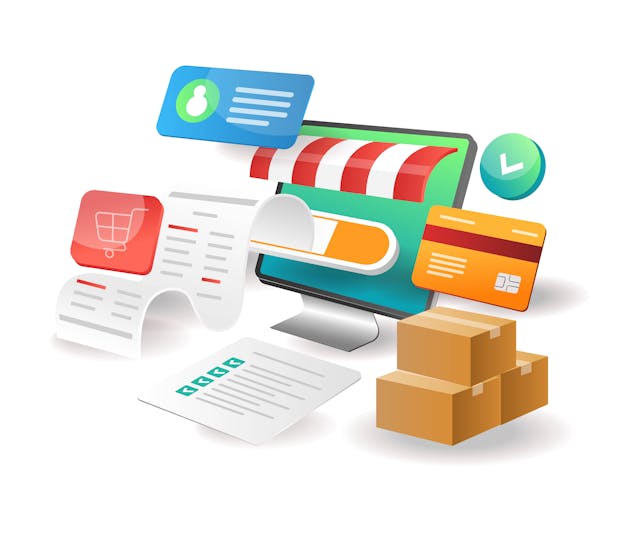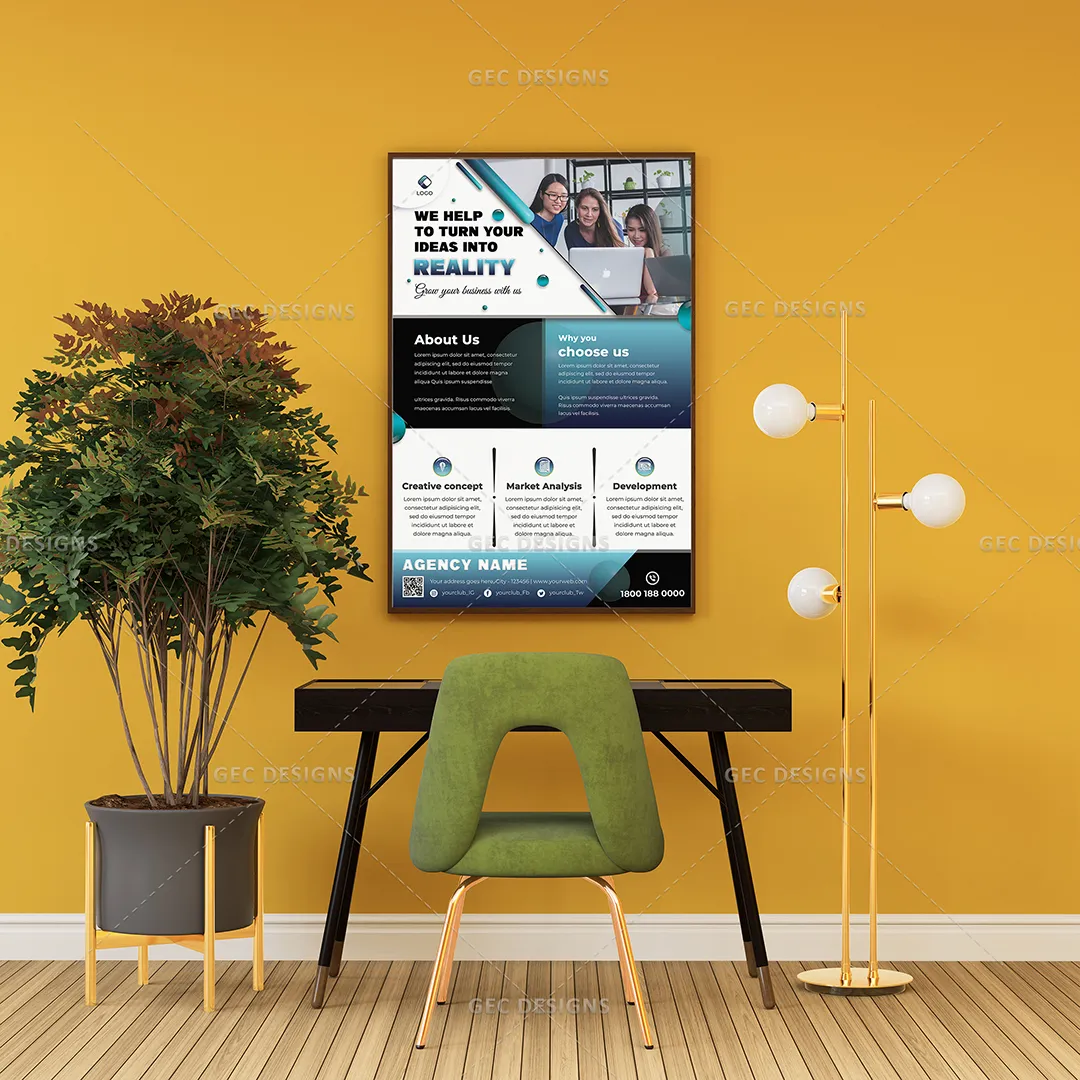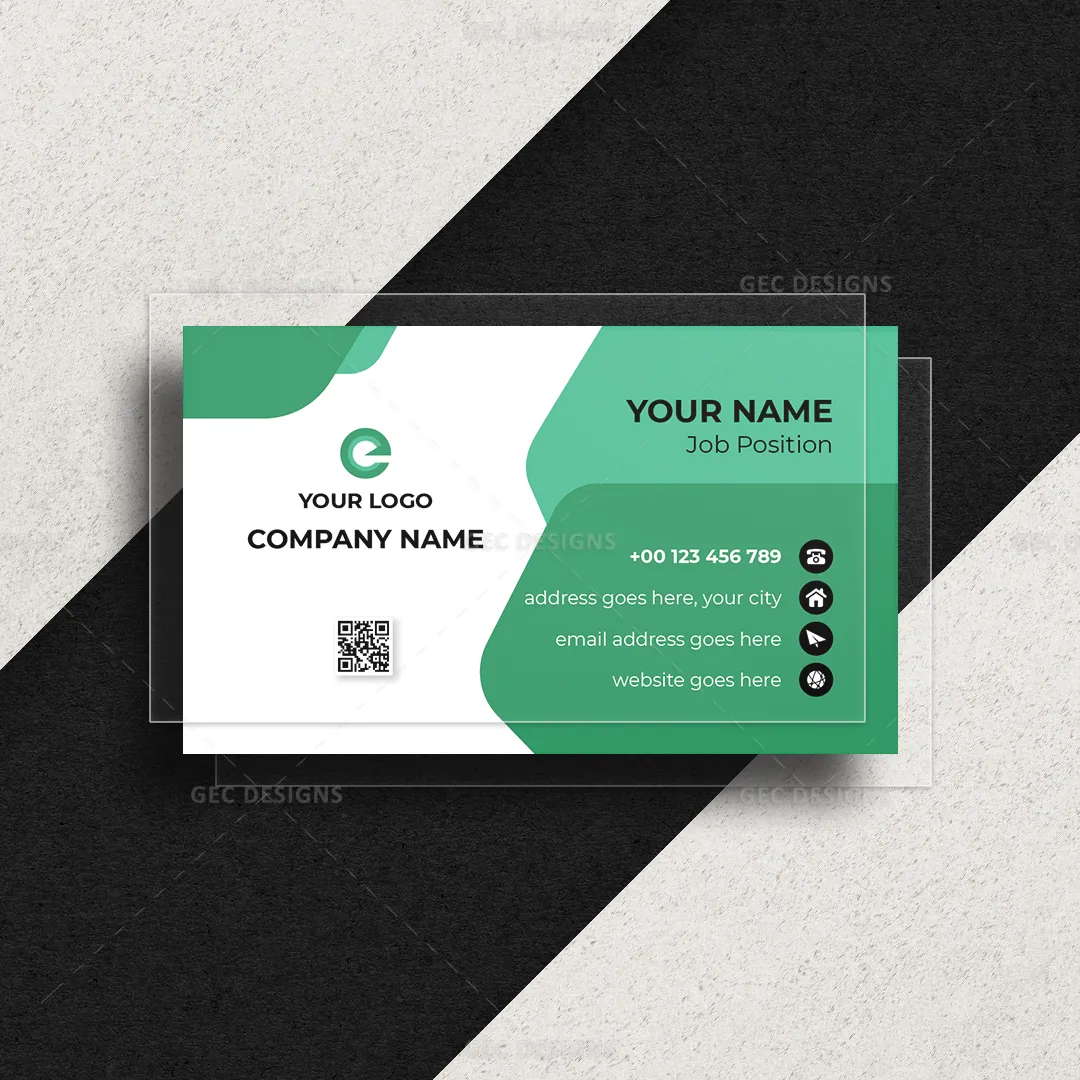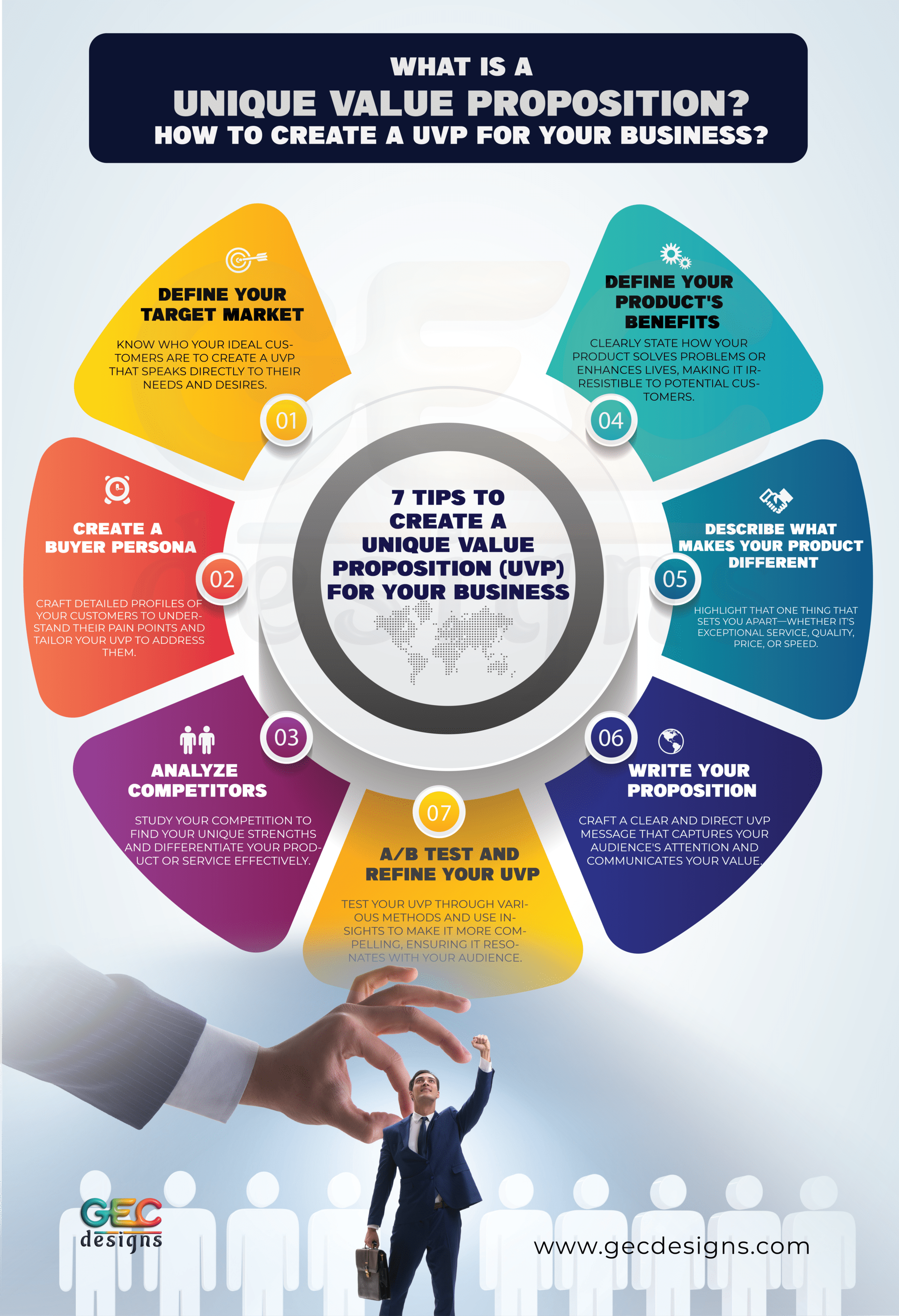What is a unique value proposition? How to create a UVP for your business?
A unique value proposition is the secret weapon of every business’s success. If you are a startup and you have not yet created your UVP, then this article is for you. A Unique Value Proposition can be instrumental in attracting and retaining customers, increasing your market share, and scaling up your business. Want to know how to create a UVP that stands out? Follow these steps for creating a unique value proposition for your business. We also share some example of effective UVPs that helps to create for your own.
What is a unique value proposition?
A unique value proposition or Unique selling proposition is a simple statement that tells why a customer would choose your product or service, and how your product or service will solve their problems and address their needs. It explains what separates you from your competitors.
How to create a UVP for your business?
Here are the 7 Tips to Create a Unique Value Proposition (UVP) for Your Business
- Define your target market
- Create a buyer persona
- Analyze competitors
- Define your product’s benefits
- Describe what makes your product different
- Write your proposition
- A/B test and refine your UVP
Define your target market
To create your unique value proposition first, you need to identify who your target audience is. By identifying the target market, you can understand who you should target with the proposition you create.
Many start-ups like to have everyone as their customers and your product seems excellent for everyone, but do you know? That is a big mistake. If you like to reach everyone, your product will get lost in the crowd. If you want to create effective UVP for your product or business, you have to focus on a specific target group and try to solve their immediate problem.
Create a buyer persona
If you want to sell to your audience, you have to know them very well. Create multiple buyer personas, so that you can understand the pain points of your audience and highlight how your products solve their issues. Creating an effective customer profile is all about understanding who your target audience is, what they want, and what they care about.
Conduct market research, targeting both your current customers and other demographics that you believe could be potential customers. You can use many methods to create buyer personas such as interviews, social media, analytics, surveys, and feedback. Identify as many characteristics about your audience as possible such as demographic information, income statistics, interests, and family makeup.
Analyze competitors
Competitive analysis helps to understand competitor’s strengths and weaknesses and allows you to communicate why people should choose you over others. Your audience has many options to solve their problem. So you have to convince them how you and your product differ from others.
To differentiate yourself from the competition, it's important to thoroughly research them. This means examining their mission statement, as well as gaining insight into the types of employees they have. To set yourself apart, it's essential to be aware of what has already been done.
Here, we have analyzed and explained the 7 tips to create a Unique Value Proposition (UVP) for your business. Analyzed from Defining target markets to Testing and redefining UVP.
Define your product’s benefits
Write down the functional benefits of your product or how it solves the problem to a specific audience. Explain your product as a new way of getting things done by challenging the traditional methods people used before encountering your product.
Imagine yourself in your audience's position and try to picture a scenario that would inspire them to add your product to their shopping cart.
Describe what makes your product different
To separate your product from others, you have to know your competitors and what they stand for. Speak about the one thing that you do differently from your other competitors. It could be anything like better customer service, higher product quality, competitive price, or quicker delivery.
Ask yourself the following questions and try to write down the answers for the same to describe what makes your product different
- Does your product offer unique features that are not present in other products?
- Do your products or services help to save time?
- Is it priced more affordably than your competitors?
- What distinguishes your product or service as a must-have for customers?
- When someone hears your brand or product name, what impression do you want them to have and remember about your business?
Take some time to identify in what ways your product meets the needs of your target audience that other products fail to do so.
Write your proposition
Once you’ve decided what you will cover in your unique value proposition, it’s time to write it down in a single core message. You don’t need to list out every benefit of your products or services here. Just, focus on one key message that connects to your target audience’s pain points.
While writing your proposition, keep in mind that you have to grab your audience's attention at a glance. So that they would like to explore what else they have in your product.
To ensure clear communication, it's best to avoid buzzwords and cute phrases that may only be understood by you. Instead, aim to be direct, factual, and bold in your language, while also establishing consistency throughout your communication."
To make an impact, it's important to demonstrate the benefits that your product or service can offer to customers, focusing on how it can enhance their overall quality of life. To achieve this, it's recommended to appeal to the customer's emotional side as it can have a greater impact on their decision-making process.
A/B test and refine your UVP
After creating your unique value proposition, it's time to see how well it works. To make sure it's doing its job, you need to check it with feedback and data. There are different ways to do this, like surveys, talking to people, using special web pages, or trying A/B tests. Once you've gathered these details, you can make your UVP even better.
Remember, your unique value proposition isn't set in stone. It should change as your business grows, the market changes, and you get to know your customers better. So, keep updating it to keep your business strong and your customers happy.
5 examples of great value propositions
- Evernote - Tame your work, organize your life
- Stripe – Payments infrastructure for the internet
- Spotify – Music for everyone
- Coca-Cola –cola – Refresh the world. Make a difference
- Web flow – Build with the power of code – without writing any.
Conclusion
In conclusion, your Unique Value Proposition (UVP) isn't just a marketing tool; it's the essence of your business. It's what sets you apart, captivates your audience, and fuels your growth. Your UVP isn't static; it should evolve alongside your business, adapting to changing market dynamics and customer insights. By creating a compelling UVP, you not only attract and retain customers but also ensure your business's enduring success. So, go ahead and embark on the journey of building a UVP that defines your unique story and drives your brand forward.
Q & A on Creating Unique Value Proposition (UVP) for Business
Q1: What is a Unique Value Proposition (UVP)?
A Unique Value Proposition (UVP) is a statement that explains why customers should choose your product or service over competitors, highlighting how it solves their problems and meets their needs.
Q2: How can I create a UVP for my business?
To create a UVP, define your target market, create buyer personas, analyze competitors, identify your product's benefits, describe what makes your product different, and write a clear and direct proposition.
Q3: Why is defining the target market important when creating a UVP?
Defining the target market helps you understand who you should target with your UVP. Focusing on a specific audience and solving their problems is more effective than trying to appeal to everyone.
Q4: What is a buyer persona, and why is it essential for creating a UVP?
A buyer persona is a detailed profile of your ideal customer. Creating them helps you understand your audience's pain points and how your product solves their issues, making it easier to craft a compelling UVP.
Q5: How does analyzing competitors contribute to creating a UVP?
Competitive analysis reveals your competitors' strengths and weaknesses, enabling you to differentiate your product or service and convince customers to choose you over others.
Q6: Why is it crucial to define your product's benefits in a UVP?
Defining your product's benefits explains how it solves your audience's problems, making it more appealing to potential customers.
Q7: What should I emphasize to describe what makes my product different in a UVP?
Highlight one unique aspect that sets your product apart from competitors. It could be better customer service, higher quality, competitive pricing, or quicker delivery.
Q8: What's the importance of writing a concise UVP?
A concise UVP grabs the audience's attention quickly and encourages them to explore more about your product.
Q9: How can I test and refine my UVP for maximum effectiveness?
You can test your UVP through methods like surveys, interviews, feedback, or A/B testing. Using the insights gathered, refine your UVP to make it more compelling and effective.
Q10: Why is it necessary for a UVP to adapt and evolve over time?
A UVP should evolve with your business's growth, changes in market conditions, and your improved understanding of your customers. This ensures it remains relevant and continues to drive your business's success.
Bonus Tips
Adapt and evolve your UVP
Adapt and evolve your UVP" is a crucial step in ensuring the continued success of your business. Your Unique Value Proposition (UVP) is not a one-time creation; it's a dynamic element that must adapt to changing circumstances. As your business grows, market conditions shift, and you gain a deeper understanding of your customers, your UVP should reflect these changes.
To adapt your UVP, regularly revisit and reassess it. Ensure it still aligns with your business objectives and the evolving needs of your target audience. If new strengths emerge or market dynamics change, don't hesitate to refine and update your UVP to stay competitive.
Remember, a relevant and effective UVP acts as a compass, guiding your business in all decision-making. By continuously adapting and evolving it, you can remain a step ahead in a rapidly changing business landscape and maintain a strong connection with your customers.

Rajanarthagi
Content writer and Marketer
An enthusiastic SEO expert, passion for digital marketing with two years of expertise in writing Digital Marketing and SEO content. She is a Master of Business Administration graduate from a reputed university in south India. Her passion for SEO and online marketing helps her to stay up to date with the trends and strategies. Follow her on social media sites, to stay up to date with SEO, and Digital Marketing, Updates. To contact Raji, visit the contact page.













